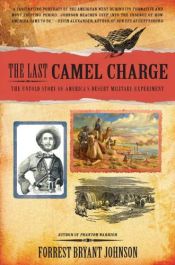The Last Camel Charge: The Untold Story of America's Desert Military Experiment
Blurb
In the mid-nineteenth century, the U.S. Army would employ a weapon that had never before been seen on its native soil. From the Middle East came a cavalry mount that would fare better than both mules and horses in the American Southwest. Against the Mojave in the Arizona Territory...against the Mormons in Utah Territory...during the early stages of the Civil War, the camel would become one of America's great military experiements, and a nearly forgotten chapter of Americana.The Last Camel Charge is the first book to tell the complete story and document in detail the military's experiment with camels. At the end of the Mexican-American War in 1848, a need emerged for control of-and transportation through-the country's vast new western territories. The hostile environment proved a challenge to the Army's traditional mounts, and in a radical move, the War Department ordered a Navy ship and its captain to the Mid-East to purchase camels and deliver them to an Army post in Texas.
The mission brought together an extraordinary group of people: innovative rancher Samuel A. Bishop, whose desperation over the Mojave gave birth to the idea; Mexican War hero Lt. Edward F. Beale, placed in command of the newly arrived beasts, who would forge a wagon trail westward. At the same time, Colonel Albert S. Johnston was leading troops against the Mormons and Hadji "Hi Jolly" Ali, who accompanied the great beasts overseas, would become known as one of America's first Muslim immigrants.
Reaching speeds up to forty miles an hour, traveling days without water, and able to carry three times the weight of a mule, camels helped to subdue enemies, reach new frontiers, and unite a nation. And now, The Last Camel Charge gives them their due as a vital piece of American history.

 English
English Español
Español Deutsch
Deutsch










Member Reviews Write your own review
Be the first person to review
Log in to comment